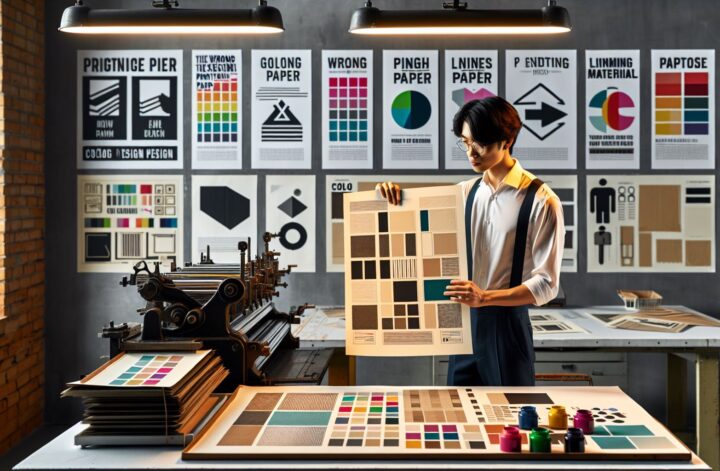In the world of printing, the materials you use can make a huge difference in the final outcome of your project. Whether you are printing brochures, flyers, business cards, or any other type of marketing material, the materials you choose can impact everything from the colors and text clarity to the overall durability of the finished product. In this article, we’ll take a closer look at the importance of choosing the right printing materials and how it can affect the success of your project.
Introduction
When it comes to printing materials, there are a wide variety of options available. From different types of paper to specialty finishes and coatings, the choices can be overwhelming. However, taking the time to carefully select the right materials for your project can make a significant impact on the overall quality and effectiveness of your printed materials.
The Impact of Paper Quality
One of the most important decisions you will make when selecting printing materials is the type of paper you choose. The quality and weight of the paper can affect everything from how the colors appear on the page to how the text reads. For example, using a high-quality, heavy-weight paper for a flyer or brochure can give it a more professional and upscale appearance, while using a lighter-weight paper may be more suitable for items like handouts or business cards.
In addition to weight, the finish of the paper can also play a role in the final outcome of your project. Glossy paper can give your materials a sleek and polished look, while matte paper can provide a more subtle and understated appearance. Choosing the right paper finish can help ensure that your printed materials convey the message and image you want to project.
Specialty Finishes and Coatings
In addition to paper quality, there are a variety of specialty finishes and coatings that can enhance the appearance and durability of your printed materials. For example, using a UV coating can give your materials a glossy and professional finish, while a matte coating can provide a more subdued look. In addition, specialty finishes like embossing or foiling can add a touch of elegance and sophistication to your materials.
When considering specialty finishes and coatings, it’s important to think about the intended use of your printed materials. For items like business cards or brochures that will be handled frequently, a coating like UV or matte can help protect the materials from wear and tear. For more high-end projects like invitations or marketing materials, specialty finishes like embossing or foiling can make a lasting impression on your recipients.
Sustainability and Environmental Impact
In today’s world, more and more businesses are looking for ways to reduce their environmental impact and operate in a more sustainable manner. When selecting printing materials, it’s important to consider the environmental impact of the materials you choose. For example, using recycled paper or paper sourced from sustainably managed forests can help reduce your carbon footprint and show your commitment to environmental responsibility.
In addition to the type of paper you choose, it’s also important to consider the printing process itself. Digital printing methods are generally more eco-friendly than traditional offset printing methods, as they use less energy and produce less waste. By choosing a printing company that is committed to environmentally responsible practices, you can ensure that your printed materials are produced in a sustainable and eco-friendly manner.
Conclusion
Choosing the right printing materials is an important step in ensuring the success of your printing project. From paper quality and finish to specialty coatings and environmental impact, the materials you choose can have a significant impact on the final outcome of your materials. By taking the time to carefully select the right materials for your project, you can create printed materials that are not only visually appealing and effective but also environmentally responsible. So next time you have a printing project, be sure to consider the materials you choose carefully – it can make all the difference in the world.

